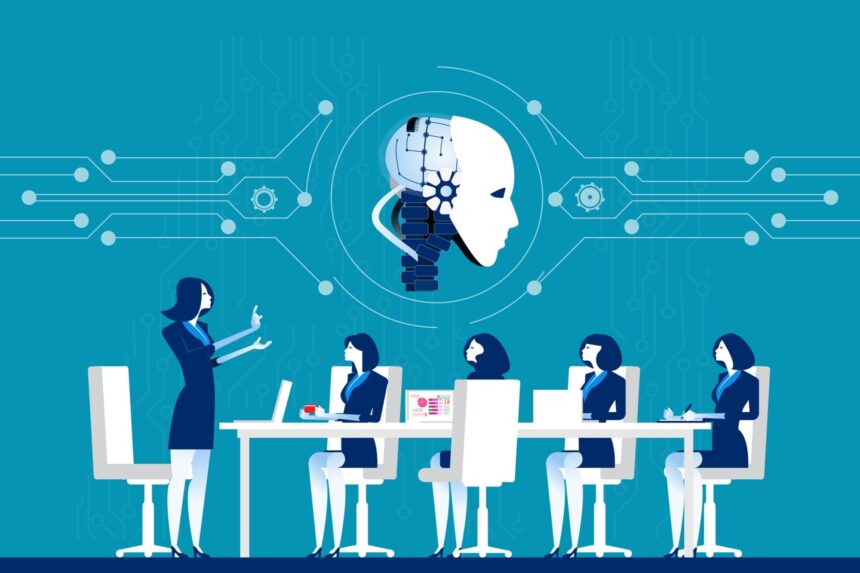Opinions expressed by Entrepreneur contributors are their own.
You’re an HR professional. Your organization wants artificial intelligence put to work on more effective, productive employee training programs. And you’re grappling with the mandate, because with AI there are no pat answers. Now, the advent of AI-powered agentic technology, a next-level step compared to now-familiar copilots and chatbots, makes the puzzle seem anything but easier.
Here are seven best practices — a.k.a. seven smart steps to building trust in AI agents as you work them into workplace skills development within your organization.
The rise of AI agents in workplace training
I’ll assume you’re already sold on the business value of more engaging, personalized training. Generative AI applications such as copilots have gotten us a fair distance down that road in a relatively short time. But as Ferris Bueller said, life comes at you fast. The next wave is here: AI-powered agents — more autonomous learning assistants.
For learners, AI agents act as “information concierges,” suggesting and customizing content to optimize benefits for both employer and employee. Operating behind the scenes, they automate processes like skill mapping, curriculum design and assessment.
User engagement and information retention typically spike upwards. And with human oversight, AI agents continuously absorb feedback, adapt and improve, helping training programs remain relevant and effective.
Related: Want to Get The Most Out of AI? Start Treating AI Like Your Human Employees
Challenges and considerations for HR professionals
All the potential organizational benefits of AI-assisted training can be diluted, if not neutralized, if there’s an employee trust deficit. Building and maintaining that trust and addressing understandable concerns about AI adoption are essential tasks for HR professionals.
This is especially true given the digital divides we’ve found among different demographics. CYPHER Learning’s research indicates that younger workers, men and senior management are more comfortable with AI, while women, older workers and manual or clerical workers harbor more skepticism or fear.
Bridging the skepticism gap takes proactive effort, including transparent communication about AI’s role in training, addressing ethical considerations, and providing support to those less familiar with the technology.
And as AI agents keep evolving, expanding everyone’s AI comfort zone will only grow more critical. Just wait until they grow more adept at understanding natural language and responding in kind and intuiting user intent.
7 tips for incorporating AI agents into workplace and extended enterprise training
To successfully integrate AI agents into training initiatives:
- Start with pilot programs
Before a full-scale rollout, initiate pilot programs to test AI agents’ effectiveness in training scenarios. Select a diverse focus group of employees. Gather their feedback and make adjustments that show you listened. You’ll identify potential challenges early, head them off and refine your AI tools to better serve the workforce. - Instill transparency and ethical use
Clearly communicate the purpose and function of AI agents to employees. Address concerns regarding data privacy and ethical use of AI. Establish guidelines to govern AI interactions; stress to employees that AI agents are there to complement and elevate them, not infringe on personal boundaries or job security. - Provide training and support
Offer training sessions to help employees interact effectively with AI agents. Provide resources and support channels for the apprehensive. Fostering a culture of continuous learning and adaptability is key to supporting a productive AI-enhanced environment. - Monitor and evaluate performance
Continuously monitor the performance of AI agents delivering training content. Collect data on engagement levels, learning outcomes and user satisfaction. Use this information to refine training programs and confirm that AI agents are contributing positively to employee development. - Promote inclusivity
Design AI-driven training programs that cater to diverse learning needs. Content should be accessible and relevant to every employee, including those who may be less familiar with technology. Promoting inclusivity enhances learning outcomes as well as user confidence and a sense of belonging. - Leverage AI for extended enterprise training
The value of AI agents in training settings is not confined to internal applications. Businesses that offer extended enterprise training can deploy AI-driven solutions to support personalized learning for external stakeholders: partners, distributors and customers. For instance, sales teams can receive real-time product updates, while partners can access training tailored to their specific needs. - Balance AI with human interaction
While AI plays a pivotal role in streamlining learning, human involvement remains essential. Managers and mentors should work alongside AI-driven training solutions to provide context, motivation and oversight. Ideally, employees see AI enhancing their upskilling efforts, not replacing valuable human-led training interactions.
Related: ‘Human-Capable’ AI Agents Will Change the Workforce Within 3 Years, According to a CEO Currently Creating the ‘Perfect’ AI Employee
Enhancing job satisfaction and reducing turnover
Solving the trust challenge typically pays serious dividends. When employees feel AI-powered training is genuinely advancing their interests, engagement levels and job satisfaction rise. Turnover rates decline. According to the 2024 LinkedIn Workforce Learning Report, 90% of organizations are concerned about employee retention, and providing learning opportunities is the No. 1 retention strategy.
Moreover, AI agents facilitate “learning in the moment,” delivering contextually relevant training materials on demand. This approach to upskilling is more effective than scheduling seminars or other static learning events and aligns with the just-in-time and continuous learning needs of many organizations today.
AI agents will keep evolving, growing ever more attuned to human behaviors and preferences. Helping employees trust them and leverage their potential with can-do optimism is up to HR and training professionals — and it’s vital to organizational success. An anxious or disconcerted workforce indicates a troubled business, but a confident, well-equipped one is profoundly powerful. With thoughtful implementation, AI agents integrated into workplace training can unleash that power.











